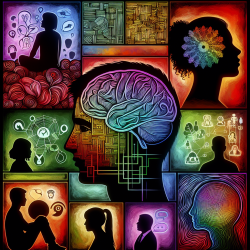Introduction
Depression among adolescents is a growing concern worldwide, and finding effective treatment methods is crucial. The study titled "Computer-assisted cognitive-behavioral therapy for adolescent depression in primary care clinics in Santiago, Chile (YPSA-M): study protocol for a randomized controlled trial" presents a promising approach to enhance traditional cognitive-behavioral therapy (CBT) with computer-assisted components. This blog explores how practitioners can implement these findings to improve outcomes for adolescents dealing with depression.
Study Overview
The research conducted in Santiago, Chile, involved a randomized controlled trial with 216 adolescents aged 15-19. Participants were divided into two groups: one receiving eight sessions of computer-assisted CBT along with usual care, and the other receiving only the usual care. The study aimed to measure the efficacy of the computer-assisted intervention in reducing depressive symptoms, dysfunctional thoughts, and improving problem-solving strategies and health-related quality of life (HRQoL).
Key Findings
- Adolescents receiving computer-assisted CBT showed significantly lower depression scores compared to those receiving usual care.
- The intervention group exhibited fewer dysfunctional thoughts and better problem-solving skills.
- Participants in the computer-assisted CBT group reported higher HRQoL scores.
- Adherence to treatment was higher in the intervention group, with a lower dropout rate compared to the control group.
Implications for Practitioners
These findings suggest that integrating computer-assisted components into traditional CBT can enhance its effectiveness for treating adolescent depression. Here are some practical steps for practitioners:
- Incorporate Technology: Utilize computer-assisted programs to complement face-to-face CBT sessions. This can make therapy more engaging for adolescents and improve their adherence to treatment.
- Training and Supervision: Ensure that therapists are adequately trained in using computer-assisted CBT tools and receive regular supervision to maintain the quality of therapy.
- Monitor Progress: Use validated tools like the Beck Depression Inventory (BDI) and the Children’s Automatic Thoughts Scale to monitor changes in depressive symptoms and dysfunctional thoughts.
- Enhance Problem-Solving Skills: Integrate problem-solving techniques within the computer-assisted CBT framework to help adolescents develop better coping strategies.
Encouraging Further Research
While the study provides valuable insights, further research is necessary to explore the long-term effects of computer-assisted CBT and its applicability in different cultural contexts. Practitioners are encouraged to contribute to this growing body of knowledge by conducting similar studies in their regions and sharing their findings.
Conclusion
The integration of computer-assisted components into traditional CBT offers a promising approach to enhance the treatment of adolescent depression. By adopting these methods, practitioners can improve therapeutic outcomes and provide more engaging and effective care for adolescents.
To read the original research paper, please follow this link: Computer-assisted cognitive-behavioral therapy for adolescent depression in primary care clinics in Santiago, Chile (YPSA-M): study protocol for a randomized controlled trial.










